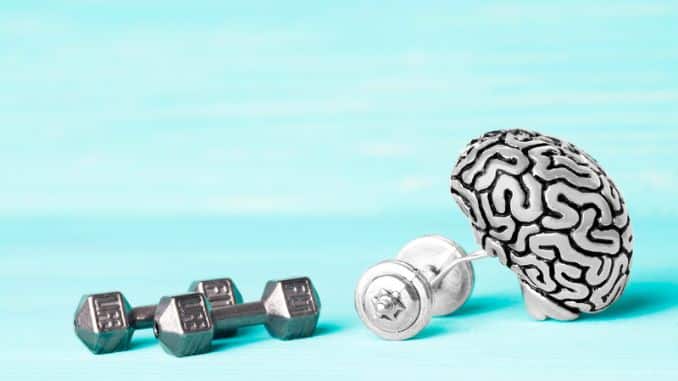
At the moment, I am in San Diego at a Mastermind event with Craig Ballantyne, Bedros Keuilian, Mike Whitfield, Shawna Kaminski, and about 30 other health and fitness professionals.
(Okay, this is not from San Diego, but a shot when flying over Seattle at sunrise.)
While flying down, I got a chance to review the Psychology of Strength program from Mike Gillette.
It’s a great program, and here is my take on things…..
Instructor Mike Gillette presents an inspiring and easy-to-understand manual in Psychology of Strength. He begins this manual with a glimpse into his personal story of strength and tackles one of the major limitations of acquiring desirable outcomes regarding strength-building routines and procedures. This major limitation is the mind.
Having the wrong mindset could derail the entire process of strength-building. Where other products may dive right into doing exercise routines, this Strength Psychology manual spends significant time addressing the importance of the mind and how this can be vital in creating your personal story of strength.
Some highlights from Psychology of Strength:
1. Understanding Mental Toughness
Sometimes, understanding the reason behind a process or attitude can go a long way in preparing an individual for success in an activity. This is what the early sections of the Strength Psychology manual map out. The instruction manual gives you the reasoning behind certain foundational concepts. This is a key element that other instruction manuals may lack. While there is an informal tone in this manual that helps to set the stage for the information presented, there are also many formally accepted concepts contained in the manual, such as the importance of having the right mindset and accepting a situation without necessarily embracing any negativity associated with the situation. Mental toughness helps us put things in perspective, which is what the Strength Psychology manual is about.
2. Presentation Of Exercises
Rather than reading only about stories, some real exercises are presented in this manual. These exercises include mindfulness, concentration, relaxation, visualization, autogenic practice, and progressive muscle relaxation. One important thing to note about these exercises is the conciseness used to present each of the exercises. This helps a person embrace the concepts. The instructions for the exercises are easy to follow. Just imagine being given instructions by a friend who is close by. Also, Mike Gillette thinks of various areas that could derail you as you practice these exercises, including distractions, thoughts, and feelings that may impede your focus.
3. Going beyond the exercises
Another highlight of the Psychology manual is that it goes beyond the provision of exercise guidelines and focuses on affirmations and goal-setting principles. It may have been expected that a manual associated with building strength and transforming a person from weakness to power would have body and muscle-building exercises. However, in reality, it’s not only about the exercises – although these exercises are certainly important. Nevertheless, there are other areas beyond the exercise that need attention, too, including how we think about the process, the ideas and issues that have limited us in the past, and the goals and objectives that can help boost a person into the desirable realm of possibilities, including the possibility of transforming from weakness to strength.
4. Easy to read and quite inspiring, too
There are different products you may come across. However, understanding what the product is about can be quite a challenge! However, the Psychology of Strength provides a personal approach that stirs up the desire to be strong, inspiring a person not to be limited by the weakness that may currently exist but to embrace the strength transformation that can occur.
5. From weakness to strength
The potential to transform from weakness to strength can seem impossible, especially for those with a state of weakness or low energy levels for most of their life. The power of this Strength Psychology instruction manual is that Mike Gillette has the same story of weakness right from childhood. He describes himself growing up as a kid who was “small, weak and seemingly afraid of everything.” It can be easy to tap into this mindset when there is a great example to follow. That’s what this manual provides.
6. A less-than-perfect past or beginning?
Perhaps you have a less-than-perfect past or beginning. If this is the case, it’s time to set this aside and step into the realization of the strength you can build! The strength that you can have!! It is nice to have some hope. You can take advantage of the personal story of strength from Mike Gillette and use these instructions and exercises to help transform your life. Mike also discusses his beginning or starting point, which included an unintended pregnancy, a broken marriage, and poverty. Perhaps you have different circumstances that have helped to keep you in a state of weakness. You could overcome this as the Psychology of Strength instruction manual shows you the way forward.
7. Peak Performance State (PPS)
If you ever thought you could not accomplish something, your mindset could have something to do with this. The Psychology of Strength instruction manual emphasizes the mindset as a learned skill. If you consider this to be true or can find logic in this frame of thinking, then you will be on the right path with this manual because there is a high correlation between what the mind thinks and what the mind determines you can do. Discover your Peak Performance State! The good news is that even if your mind does not think that a strength transformation is possible, there is the opportunity for your mind to L-E-A-R-N to think this way. Mindset is a learned skill! Doesn’t this knowledge make you want to dive into the manual to learn more?
Yes! The Strength Psychology instruction manual is a product that guides you to build up your strength and to do so with a good understanding of the WHY and the HOW components related to making this happen. These components are the glue that helps the information come together. There is a good emphasis too on setting goals plus being able to track these goals. What point if we do these exercises without committing to setting and keeping up with goals? So, if you want to be tough as nails but are unsure of how to begin, the Psychology of Strength instruction manual is a great place to start! With this manual, you will learn about the power of your mind and some exercises, too. Let Mike Gillette teach you how a tough mind is a ‘winning’ mind!!
Rick Kaselj, MS
For your equipment-free workout to lose weight and tone your body, check out the Bodyweight Blender program here!




